VEXED QUESTION
World Athletics to allow transgender and DSD athletes in female category — for now
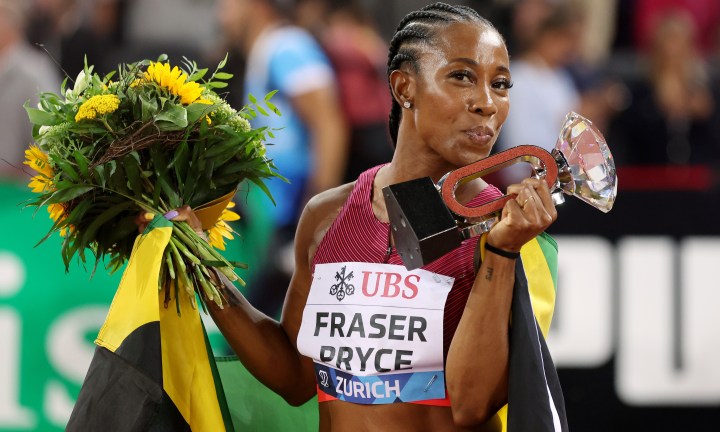
World Athletics has proposed stricter barriers to transgender women and athletes with differences of sex development (DSD) participating in female categories.
The complex, emotive and highly political issue of allowing transgender women and people with differences of sex development (DSD) to compete in the female category of athletics was muddied this week.
World Athletics, the governing body, issued a statement stating that its “preferred option” was to take a wait-and-see approach with a set of stricter criteria. It’s a position that has not taken the issue forward in any significant way and has possibly created more complexity.
“Putting forward a preferred option is the best way to gather constructive feedback, but this does not mean this is the option that will be presented to Council or indeed adopted,” a World Athletics statement said, according to a report by Reuters.
The option being discussed would cap the maximum amount of plasma testosterone for transgender women and those with DSD at 2.5 nanomoles per litre — half of the current limit of five nanomoles.
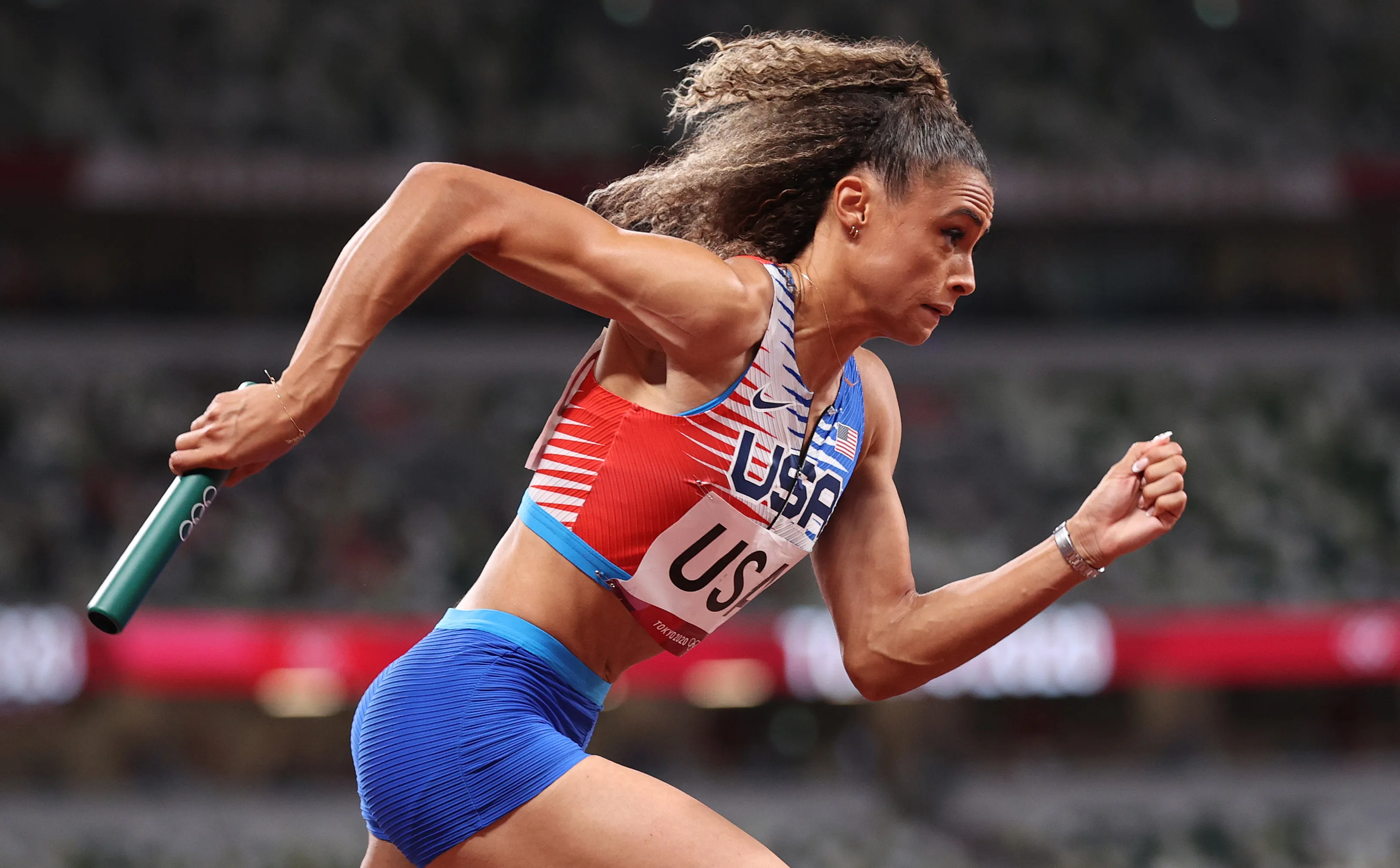
Sydney McLaughlin of Team United States competes in the Women’s 4 x 400m relay final on day 15 of the Tokyo 2020 Olympic Games on 6 August 2021. (Photo: Christian Petersen / Getty Images)
It would also double the amount of time the athlete would need to remain below that level — to two years.
On the face of it, it seems a step further to ensure fair competition in female races and events, but the question that continues to hang uncomfortably is: why should transgender women, in particular, be in the female category at all?
While transgender women are people born as biological males who have chosen to live and identify as female, DSD is a congenital condition in which people have atypical sex chromosomes.
In past court documents, South Africa’s Caster Semenya confirmed that her DSD is of the 46,XY variety, meaning that she has female features and male chromosomes.
Humans born without DSD have two X chromosomes as females and XY chromosomes as males.
Benefits of male puberty
Many experts argue that lowering testosterone levels for transgender women is not enough to offset the physical benefits accrued by going through male puberty.
It’s a biological fact that males are on average, taller, faster and physically stronger than females. They have larger muscles of more density, wider shoulders, narrower pelvises and larger hearts and lungs. They possess more fast-twitch muscle fibre and longer limbs, which are all a result of going through male puberty.
Obviously, elite female athletes will outperform most men, but when placing elite females against elite males, the picture is vastly different.
In 2022 alone, 1,972 men ran the 100m faster than the fastest woman, according to recorded stats by World Athletics. As events move away from power to endurance, the numbers drop off slightly, but even in the marathon, 617 men ran faster than the fastest female.
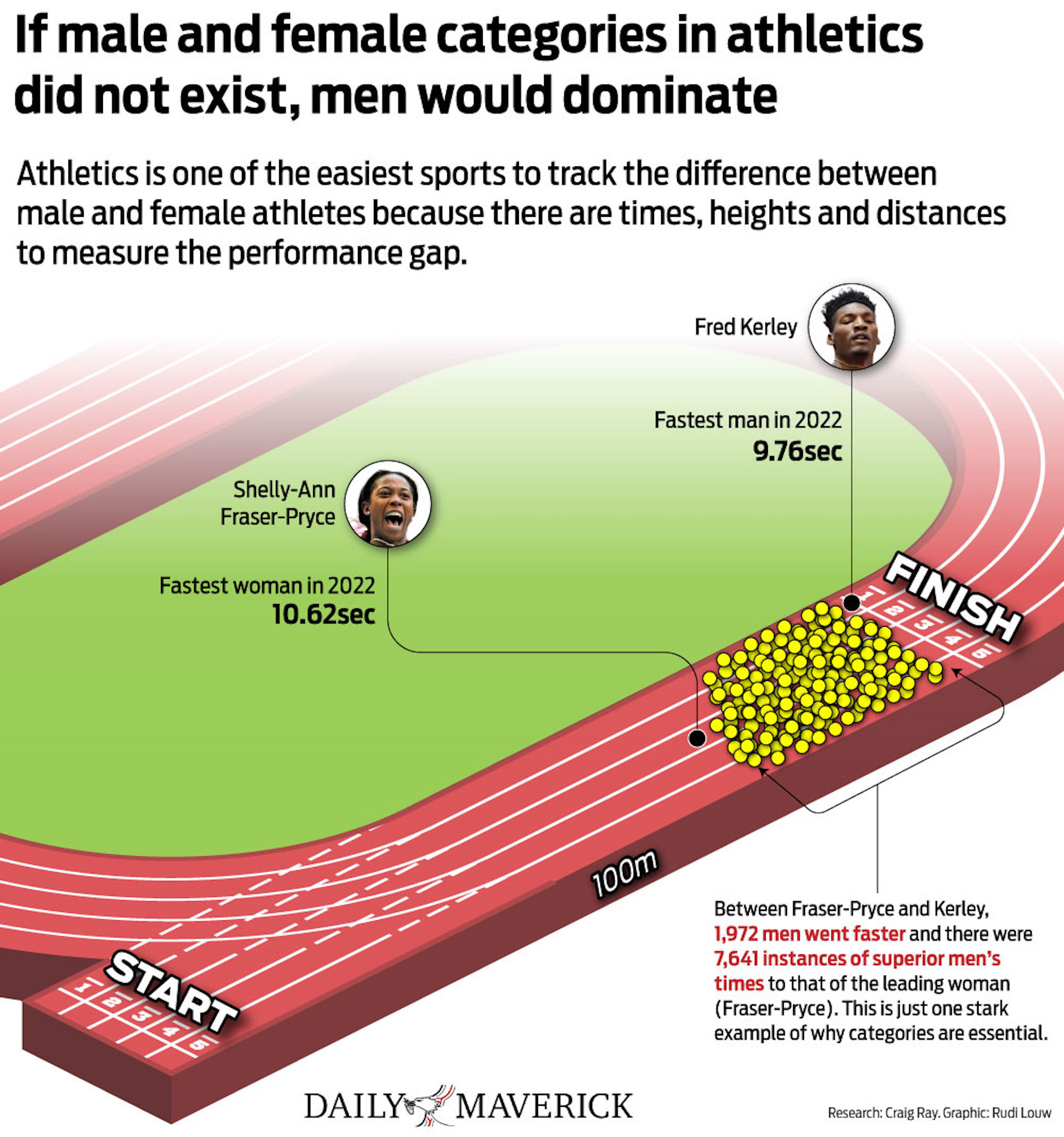
Jamaica’s Shelly-Ann Fraser-Pryce was the fastest woman on Earth last year with a time of 10.62 seconds over 100m, while the US’s Fred Kerley was the fastest man with a time of 9.76 seconds. They would be separated by almost 9m on the track, or about 10% in terms of performance if they raced together and posted those times.
Between Fraser-Pryce and Kerley, there were 7,641 instances of faster men’s times than that of the leading woman. This is just one stark example of why categories are essential.
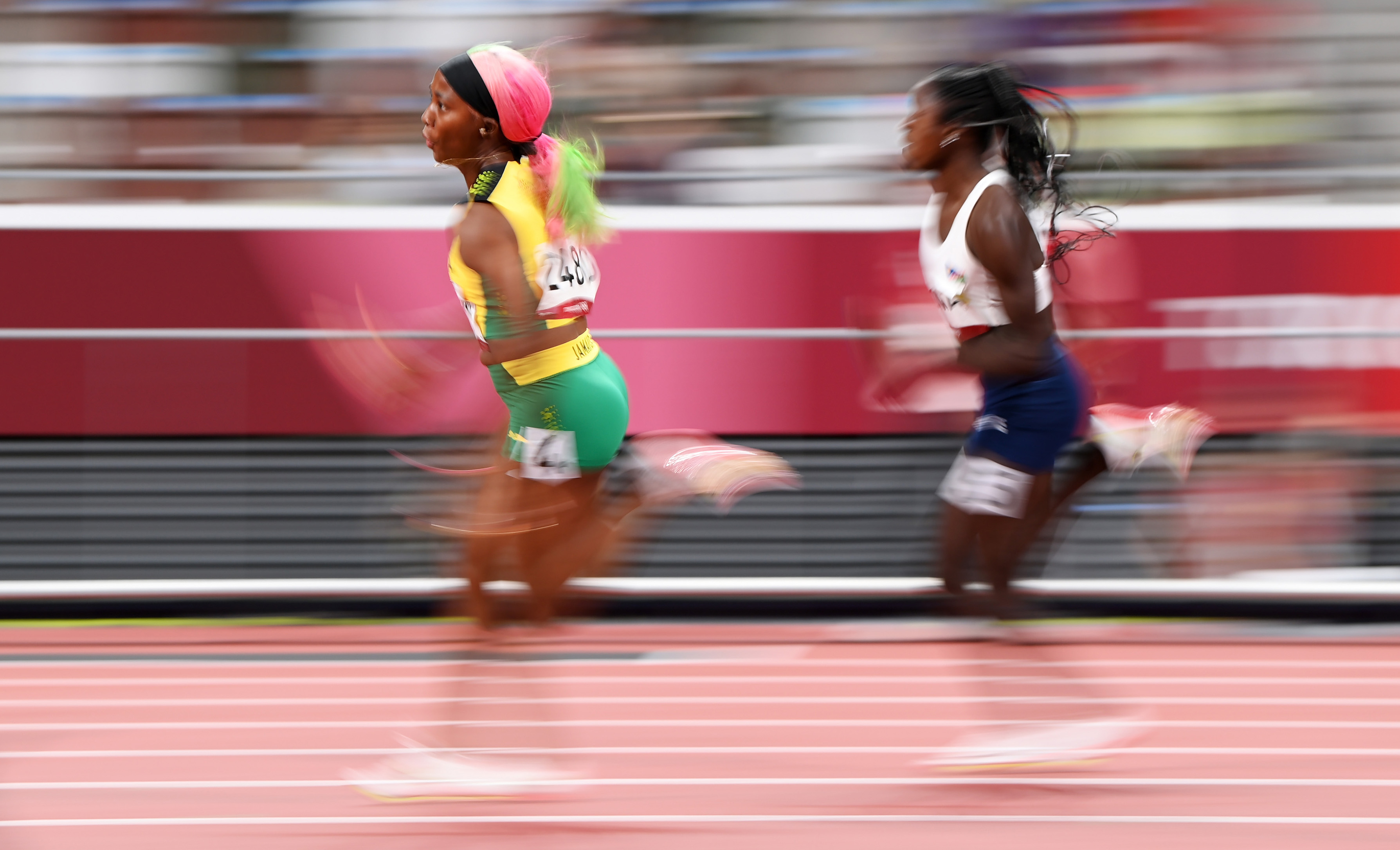
Shelly-Ann Fraser-Pryce of Team Jamaica competes with Christine Mboma of Team Namibia in the women’s 200m final on day 11 of the Tokyo 2020 Olympic Games at Olympic Stadium on 3 August 2021. (Photo: Matthias Hangst / Getty Images)
Fraser-Pryce runs faster than 99.99% of the global population, male or female, but at the elite level, she’d battle to be among the top 2,000 men.
That in no way diminishes her exceptional talent and work ethic, but were it not for a female category, Fraser-Pryce would be a fast human but not among the elite on the planet.
This is the crux of the argument against allowing transgender women who have had the benefit of going through male puberty, and even DSD athletes who have naturally high levels of testosterone, from competing in the female division of sports.
Visit Daily Maverick’s home page for more news, analysis and investigations
Transgender advocates argue that transgender females do not identify as male and therefore should compete as females (as those are the only two categories that currently exist).
But in a sporting context, gender identity and physiology are not aligned.
It’s a highly emotive subject because a person’s right to identify their gender might be acceptable in the normal course of life. But in elite sports, where categories exist for clear biological reasons, gender identification does not necessarily make it fair from a physiological standpoint.
The evidence overwhelmingly shows that if female categories aren’t ring fenced from male participation, then females would simply not be successful at the highest level.
Few transgender athletes
While advocates for transgender inclusion argue that there are relatively few transgender women athletes, and not enough studies have been done to ascertain what the benefits are, any decision taken could set a future legal precedent.
For the sport of athletics, there have been no cases of transgender women competing in the female category at an elite level, although there are several examples of athletes with DSD, with Semenya being the most high profile.
But this issue permeates all the way down to amateur and school sports, where blurring the lines between male and female categories has the potential to be more problematic.
Sports such as swimming, rugby union and rugby league have already banned transgender women, who have gone through male puberty, from competing in female categories, using the issue of fairness as a benchmark.
Respected sports scientist Professor Ross Tucker has been a strong advocate for protecting the female category for safety and fairness reasons.
“There are individuals whose biological sex does not match their gender identity. Biological males undergo puberty driven by testosterone but identify as female. What is their place in sport?” Tucker wrote in Daily Maverick in 2020.
“A decent and progressive society accepts them. But can sport accept them into the protected, closed category for women? Given the biological realities, if self-identification or gender identity were the sole criteria, women’s sport would become ‘open’, and its purpose negated.
“This then sets up what is basically a ‘colliding rights’ issue, where the rights of females to have a sporting space of their own collides with the rights of other individuals to identify as they wish.
“Sport finds itself in the middle of that collision. It becomes, effectively, a question of how various priorities are balanced. Those priorities are inclusion, fairness and, in some sports, safety.”
Controversial drugs
The use of testosterone-lowering drugs is also controversial, particularly in the case of DSD athletes, because of the negative side effects of the drugs needed to achieve these reductions.
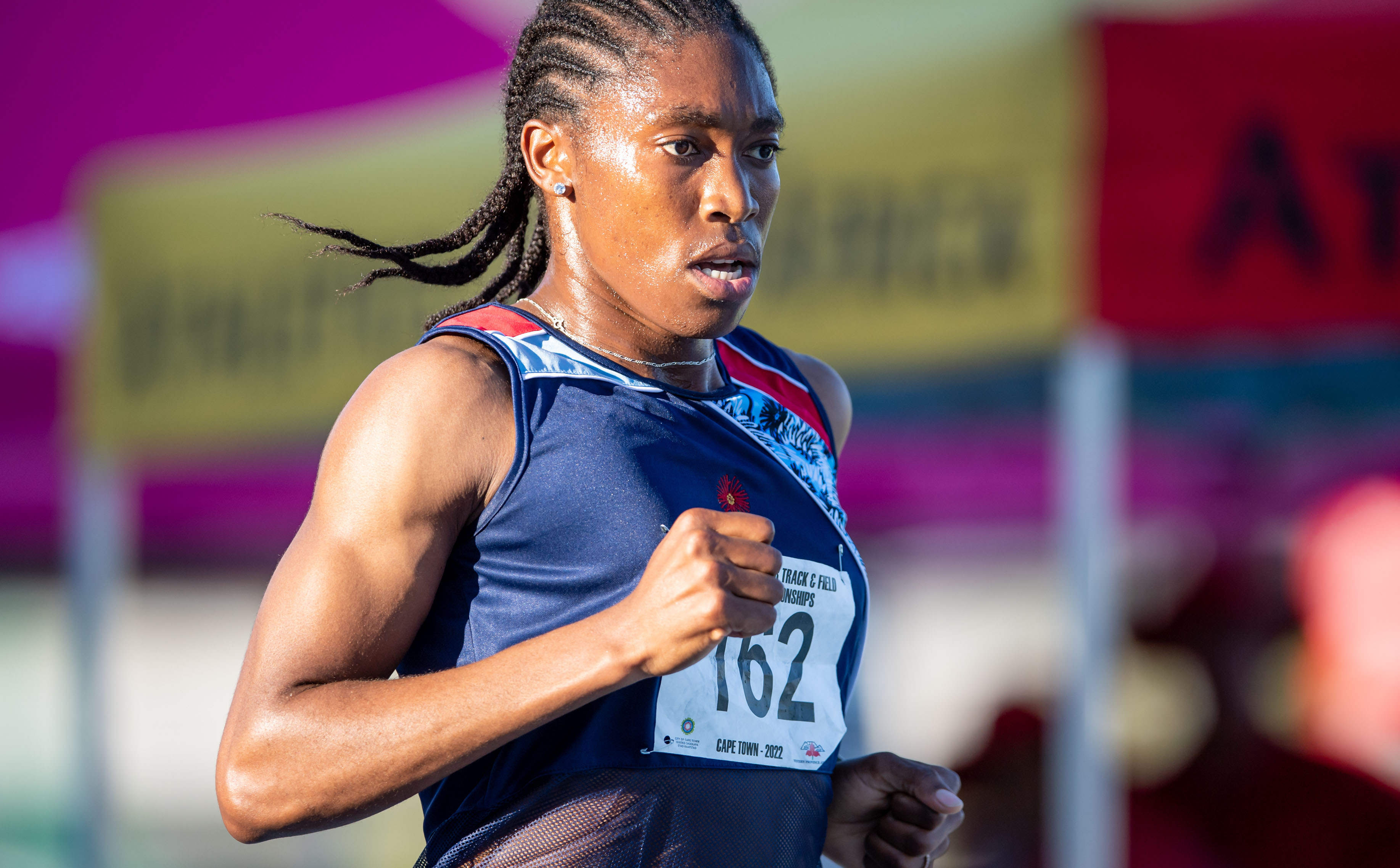
Caster Semenya has spoken brutally and candidly about the humiliations she has endured in her fight to be accepted as a female athlete. (Photo: Anton Geyser / Gallo Images)
In 2022, Semenya spoke harrowingly of how the drugs affected her physical and mental wellbeing in a candid interview with the Telegraph website.
“It made me sick, made me gain weight, panic attacks, I don’t know if I was going to have a heart attack,” Semenya said. “It’s like stabbing yourself with a knife every day. But I had no choice.
“I’m 18, I want to run, I want to make it to [the] Olympics, that’s the only option for me. But I had to make it work.”
And as more data are gathered, the effectiveness of the testosterone-suppressing drugs, in terms of negating the earlier benefits of male puberty, is increasingly questionable.
“All the studies that do exist strongly suggest a retained advantage that makes the testosterone suppression policy ineffective at achieving its objective of fairness,” Tucker wrote in Daily Maverick.
“A dozen such studies have found that strength, muscle mass, and muscle volume decrease by between 5% and 10% when testosterone is lowered.
“Given that the original male vs female difference is between 30% and 50%, the implication is that a significant part of the original advantage remains when trans women are compared to a matched group of biological females.
“There is one study suggesting that male endurance advantages in distance runners are removed entirely, which might allow some sports to balance inclusion and fairness, but for sports where mass, size, strength, power and speed matter, the evidence all points one way, in the direction of retained advantage and the necessity of a prioritisation of those imperatives.” DM



















 Become an Insider
Become an Insider
Comments - Please login in order to comment.